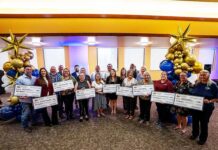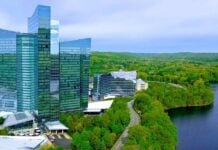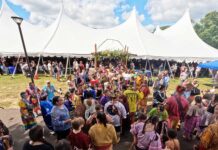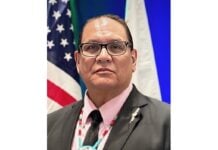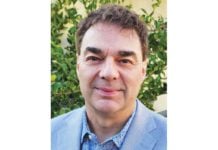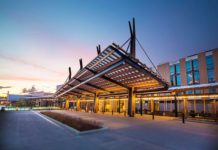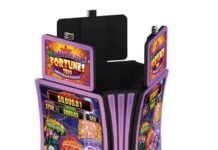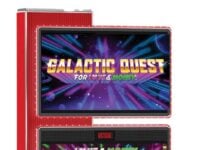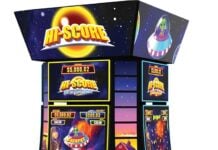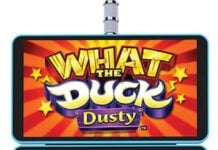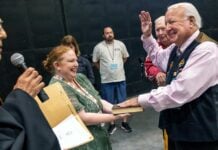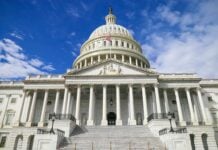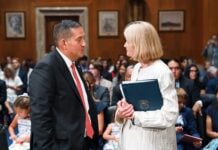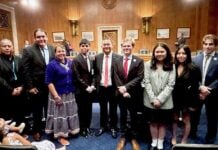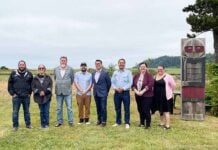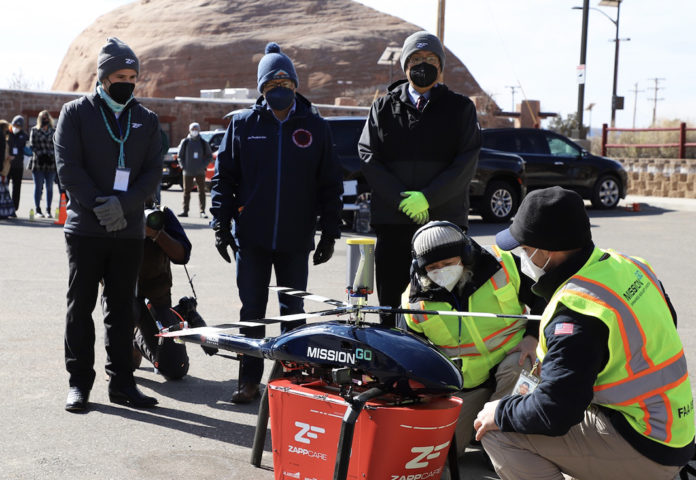
WINDOW ROCK, AZ – Navajo Nation President Jonathan Nez, Vice President Myron Lizer, and Division of Natural Resources Executive Director Dr. Rudy Shebala joined officials with ZappCare, a Native American-owned technology company and MissionGo, for the first-ever launching of the “Healing Eagle Feather” drone at the Navajo Veterans Memorial Park. The event demonstrated how the drone technology can be used to deliver medical supplies and other essential items to Navajo Nation residents, including those who reside in the most remote areas.
During the demonstration, ZappCare CEO Mark Atlan and MissionGo founder Scott Plank simulated four deliveries containing various food, medical, and emergency items using the unmanned MG Velos 100 aircraft. Vice President Lizer has worked closely with the companies to help bring more attention and resources for the initiative.
“It is truly an honor to be part of this historic day where we see the bridging of government thinking and the entrepreneurial world to serve our great Navajo People,” said Vice President Lizer. “Working with world renowned corporate minds like Mark Atlan and Scott Plank always pushes me to ask how we can find parallel opportunities to maximize our land, resources, and manpower. I am grateful to serve as the connection between these individuals and hope we can continue to think outside the box as we overcome the Nation’s challenges.”
With a maximum carrying load of 14 pounds, each of the four deliveries contained packages assembled by first responders, Navajo Technical University’s culinary arts program, pharmacists, and veterinarians. Some of the notable items that could be delivered to remote areas included insulin kits, prepackaged meals, large animal medicine, emergency communication devices, and anti-venom.
This allows a small team of operators to manage each drone, which President Nez anticipates will save valuable time and resources in emergency situations on the Navajo Nation.
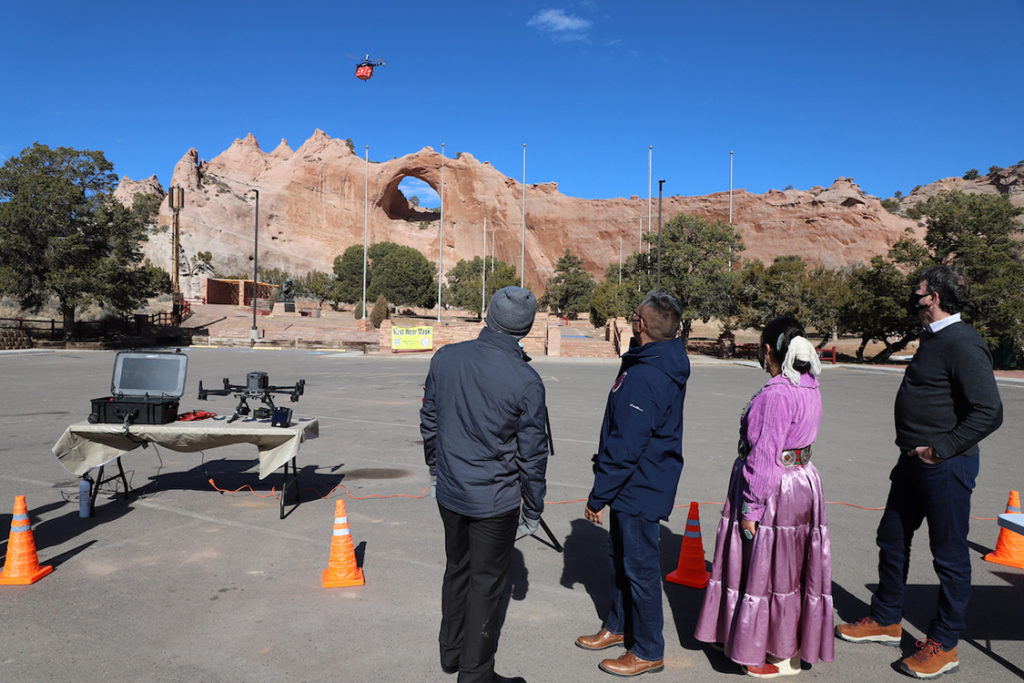
“We are now over 402,000 strong as the Navajo people, and we have plenty of professionals and young people who know how to use this technology to help our people,” said President Nez. “I see this opportunity as one of many ways to bring our bright, young minds home to serve their people using disciplines from engineering to emergency medical care. Just yesterday, it took a whole team of us to assist one family, who had been stranded in a rural area, with food and pulling them out of the mud. You can imagine how many more of our people find themselves in the same boat that this technology will help.”
With a 20-plus mile flight radius and the ability to capture live video and solar-powered technology, each drone follows automated flight paths in varying weather conditions. The drones are currently being used in Southern California to inspect rural utility lines and assess electrical infrastructure damage.
President Nez anticipates being able to use the technology to improve rural addressing, geological surveying, and perhaps one day delivering voting ballots to increase access to voting. Drones were used this past summer to assess flooding damage caused by monsoon rainfall in the Birdsprings community, and a wildfire in Shiprock, NM. With increased carrying capacity, drones may also be used to deliver food, water, fire wood, and other essential items to families when roads are washed out and communities become inaccessible by vehicles.


